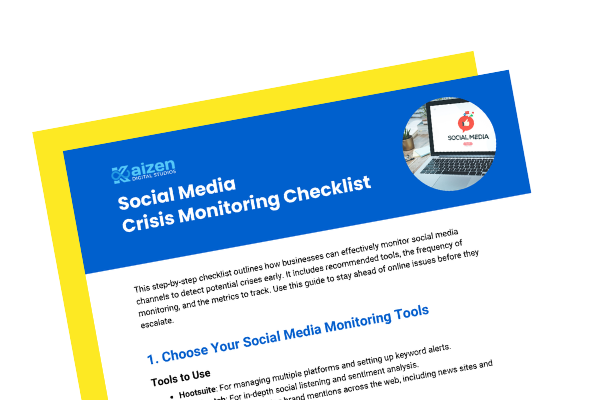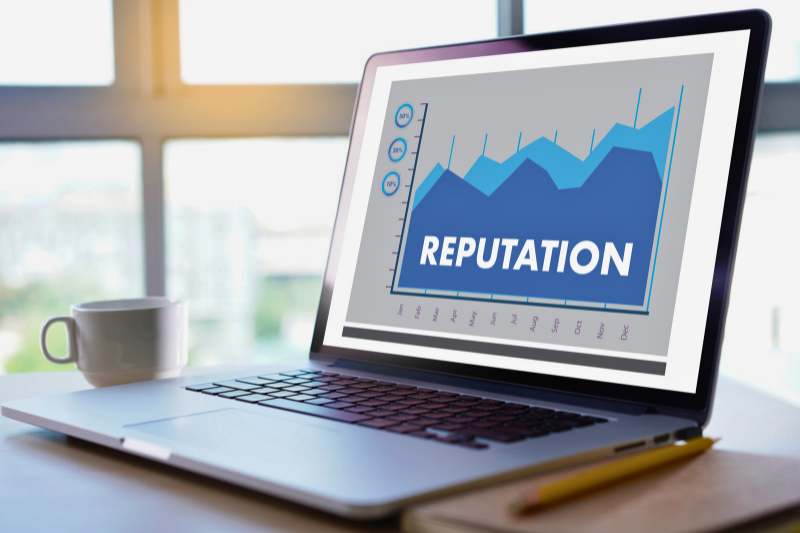Quite literally now when there’s heightened connectivity, your brand’s reputation can change in nanoseconds. One viral post, a customer complaint that gets out of hand, or the tiny issue that suddenly becomes giant online—that is the reality facing businesses in 2024.
Large enterprises to SMEs—the risk is the same. Without the right crisis management strategy, watch the trust on your brand, built over many years, vanish into thin air in just one night.
Why Crisis Management is Important in the Digital Age
Crisis management refers to steps and actions resorted by a company to plan, mitigate, and recover from an event that may dent its reputation or operational activities. In the current times, where both social media and online platforms have gained momentum—the stakes have never been higher with regard to managing brand reputation.
Fomented almost entirely by social media, we wouldn’t be exaggerating if we said homes, and even days, are well and truly over. Today, minutes are what come between time-to-react and a reputation crisis going full-blown due to that one tweet or Facebook post.
What would be the result in such a case? Lost consumer confidence, financial losses, and your brand languishing for years.
Here is a blog post that talks about proactive steps, immediate moves during the time of crisis, and methods of recovery concerning brand safety.

Proactive Crisis Prevention – Safeguard Your Brand Before the Storm
As the saying goes, “prevention is better than cure”, what it means in terms of crisis management is reducing the likelihood of having a crisis in the first place and being prepared with a ready team for an effective response. The right online reputation management service and crisis communication strategy can make all the difference. Here’s how you could get started with it:
1. Status Listening and Social Media Monitoring Tools
In the digital world, social media is often where crises start. Be it a negative review or a viral tweet, small issues can balloon into a full-blown crisis. The best way to stay ahead is through proactive social listening and monitoring.
Tools: Services such as Hootsuite, Brandwatch, and Mention let businesses track mentions of their brand, key terms, and trending hashtags. These will help you detect brewing issues early on.
Real-time Sentiment Analysis: Advanced tools, such as Sprinklr, offer real-time sentiment analysis that can show exactly how customers feel about your brand across different mediums in real time.
Actionable strategy: Set up daily notifications about your brand mentions, key products, and industry-related terms. This will help you find out negative conversations and interfere at once.
2. Development of a Crisis Communication Plan
Without an effective crisis communication plan, even an insignificant situation might turn into a full-scale disaster. A foresighted strategist ensures that your team seems to know exactly what to do ASAP.
Key Elements: A communication chain is of who and when, preapproved message templates, and explicit external communication spokespersons. Planning is the mother of efficiency. The capability to develop templates and responses for any potential event minimizes response time if/when an event occurs.
Actionable Strategy: Develop a crisis communication plan that includes pre-written responses for various crisis scenarios. This approach ensures the speed and consistency of communication.
3. Running Crisis Scenarios
Even the best plans won’t matter if your team isn’t equipped to execute them under pressure. Regular crisis simulations allow you to test your team’s ability to handle a crisis in real-world conditions.
Why It Matters: Simulations create a safe environment for your crisis response team to test its readiness, identify weaknesses, and refine your approach.
Cadence: Quarterly crisis drills are essential to keep your team sharp and prepared.
Actionable strategy: Conduct quarterly crisis drills simulating various scenarios, from product recalls to online PR issues, so your team knows exactly how to respond under pressure.

Local Crisis Management: How to Manage Regional Brand Disruptions
In the last few years, the impact of crises has varied across different regions. This means that your crisis response must adapt to local nuances and cultural differences.
1. Global Brands and Their Localized Response Strategies
A crisis in one region may not affect another area but addressing it globally can still be necessary. Global brands must customize communication for local markets, ensuring the response aligns with cultural expectations and legal requirements.
Challenges: Managing localized crises requires coordination with regional teams and a thorough understanding of local regulations.
Case Study: When KFC experienced a supply chain failure in the UK, their humorous but sincere apology resonated well with British audiences, helping to defuse the crisis.
Actionable strategy: Create region-specific crisis playbooks tailored to cultural and regulatory differences in each market.
2. Engaging Local Influencers and Spokespeople
Local voices can play a vital role in crisis communications. By partnering with trusted local influencers, brands can deliver authentic messages that resonate more with the community.
Trust Factor: Local influencers are seen as credible by their audience, helping to communicate your message during a crisis.
Case Study: In 2020, a major retail chain worked with local influencers during a regional controversy to rebuild trust within the community.
Actionable strategy: Maintain a list of local influencers who can support your brand during a regional crisis.

Crisis Management for SMEs: Tailored Strategies for Smaller Brands
Small and medium-sized businesses (SMEs) face unique challenges in crisis management due to limited resources and smaller teams. However, with the right tools, even smaller brands can effectively weather a crisis.
1. Unique Challenges for SMEs in the Digital Space
Unlike larger corporations, SMEs typically don’t have dedicated crisis management teams, making it essential to prioritize scalable and affordable solutions.
Higher Vulnerability: SMEs are often more vulnerable to reputational damage due to their smaller presence, making it harder to absorb negative publicity compared to larger brands.
Actionable Strategy: Use free or affordable tools like Google Alerts and Mention to track online mentions of your brand.
2. Cost-Effective Crisis Management Tools for SMEs
There are numerous cost-effective tools that can help SMEs manage their online reputation and respond to crises without breaking the bank.
Tools: Services like Buffer and Agorapulse allow businesses to schedule posts, track mentions, and engage with customers across multiple platforms, all on a budget.
Small but Agile Teams: SMEs may not have a large crisis team, but an agile, well-trained group can still manage a crisis effectively.
Actionable strategy: Build a small, agile crisis response team with predefined roles, allowing your business to act quickly and decisively during a crisis.

Managing a Brand Crisis on Social Media: Immediate Action Steps
Social media is often the starting point for brand crises. Speed and transparency are critical tools in managing these crises effectively.
1. The Immediacy of Social Media Crises
Social media crises can escalate rapidly if not addressed quickly. Whether it’s a negative tweet or a viral Facebook post, your response needs to be immediate.
Common Platforms: Twitter, Instagram, and Facebook are often the platforms where crises originate, so monitoring these platforms is crucial.
Actionable Strategy: Set a response time of no more than one hour for initial acknowledgment of the issue. Even if you don’t have all the information, an early acknowledgment shows your audience that you are aware of the problem and are taking steps to address it.
2. Handling Public Backlash
One of the biggest mistakes brands make during a crisis is becoming defensive. Instead, the best approach is to respond with empathy, transparency, and accountability.
Actionable Strategy: Always acknowledge the issue, take responsibility, and provide real-time updates on how you are resolving the situation.
3. Real-Life Examples of Social Media Crisis Management
There are several examples of brands that have successfully managed a social media crisis—and others that haven’t.
Success: In 2017, United Airlines faced backlash after forcibly removing a passenger from a flight. Their initial response was defensive, but once they issued a genuine apology and implemented changes, they began to recover.
Failure: In 2018, H&M faced public outrage due to an insensitive advertisement. Their delayed response and lack of accountability worsened the situation.
Actionable Strategy: Learn from both successful and unsuccessful crisis management efforts. Study past examples to refine your approach.
Post-Crisis Recovery: Rebuilding Brand Trust
Once the immediate crisis has passed, your work is not done. Rebuilding trust with your customers takes time and consistent effort.
1. Restoring Customer Trust After a Crisis
In the aftermath of a crisis, customers need reassurance that your brand has learned from its mistakes and is taking steps to improve.
Steps: Issue a public apology, outline the steps you’re taking to prevent a similar crisis, and follow through on these promises.
Actionable strategy: Regularly communicate progress with your audience to demonstrate your commitment to making things right.
2. Post-Crisis Storytelling
Use the crisis as an opportunity to tell a new story—one of resilience and improvement. Engaging your audience with the lessons you’ve learned and how you’re moving forward can help restore trust.
Actionable strategy: Publish a detailed post-crisis narrative, highlighting the changes your brand has made as a result of the crisis.

Tools and Resources for Ongoing Online Reputation Management
To stay ahead of potential crises, it’s essential to continuously monitor your brand’s health and maintain a proactive approach to reputation management.
1. Top Reputation Management Tools for Monitoring Brand Health
There are a variety of tools available to help businesses track their online reputation and detect potential issues before they escalate.
Popular Tools: Mention, Brand24, Google Alerts, and Sprinklr are all great options for tracking mentions and assessing public sentiment.
Why It’s Important: These tools can alert you to early warning signs, such as negative reviews or comments, helping you address issues before they grow into full-blown crises.
Actionable Strategy: Implement a daily or weekly brand health check using one or more reputation management tools to monitor online mentions and public sentiment.
2. The Role of AI in Reputation Management
AI-powered tools are increasingly important in reputation management, providing early crisis detection and deeper insights into customer sentiment.
Benefits of AI: AI can quickly analyse vast amounts of data, offering real-time sentiment analysis and predictive crisis monitoring.
Example: Tools like Sprinklr use AI to detect shifts in brand sentiment, allowing businesses to respond proactively before a crisis escalates.
Actionable Strategy: Invest in AI-powered reputation management tools to gain deeper insights into customer sentiment and detect crises early.
Staying Prepared in the Digital Age
Crisis management in the digital age is not a one-time effort; it requires continuous vigilance, preparation, and adaptability. With the rise of social media and the fast pace at which information spreads, businesses must be proactive in safeguarding their brand reputation. By implementing effective monitoring tools, preparing a solid crisis communication plan, and learning from past crises, companies can minimize the impact of any crisis and emerge stronger on the other side.

Conclusion: Building a Crisis-Resilient Brand
In today’s fast-paced digital landscape, the ability to manage a crisis effectively is critical to preserving your brand’s reputation. A proactive approach, combined with swift, transparent communication during a crisis, can mean the difference between a minor setback and long-term damage. Whether you’re an SME or a global corporation, having a crisis management strategy in place will help you navigate the unpredictable nature of online reputation threats.
Key Takeaways
- Proactive Planning: Develop a solid crisis communication plan, utilize social listening tools, and prepare your team through regular crisis simulations.
- Localized Responses: Tailor your crisis management strategy to different regions, using local influencers and cultural understanding to manage and mitigate issues more effectively.
- SME Focus: For smaller businesses, affordable tools and agile teams can help manage crises without straining resources.
- Social Media Speed: Monitor social platforms and be ready to respond quickly—early acknowledgment is crucial in containing a crisis.
- Post-Crisis Recovery: Rebuilding trust after a crisis takes time, but by owning mistakes and showing how you’re improving, your brand can come out stronger.
Ultimately, the digital age presents both opportunities and challenges for brands. While crises can erupt quickly, the tools and strategies for managing them have also evolved. With the right preparation, you can protect your brand’s reputation and maintain customer trust, even in the most challenging situations.






